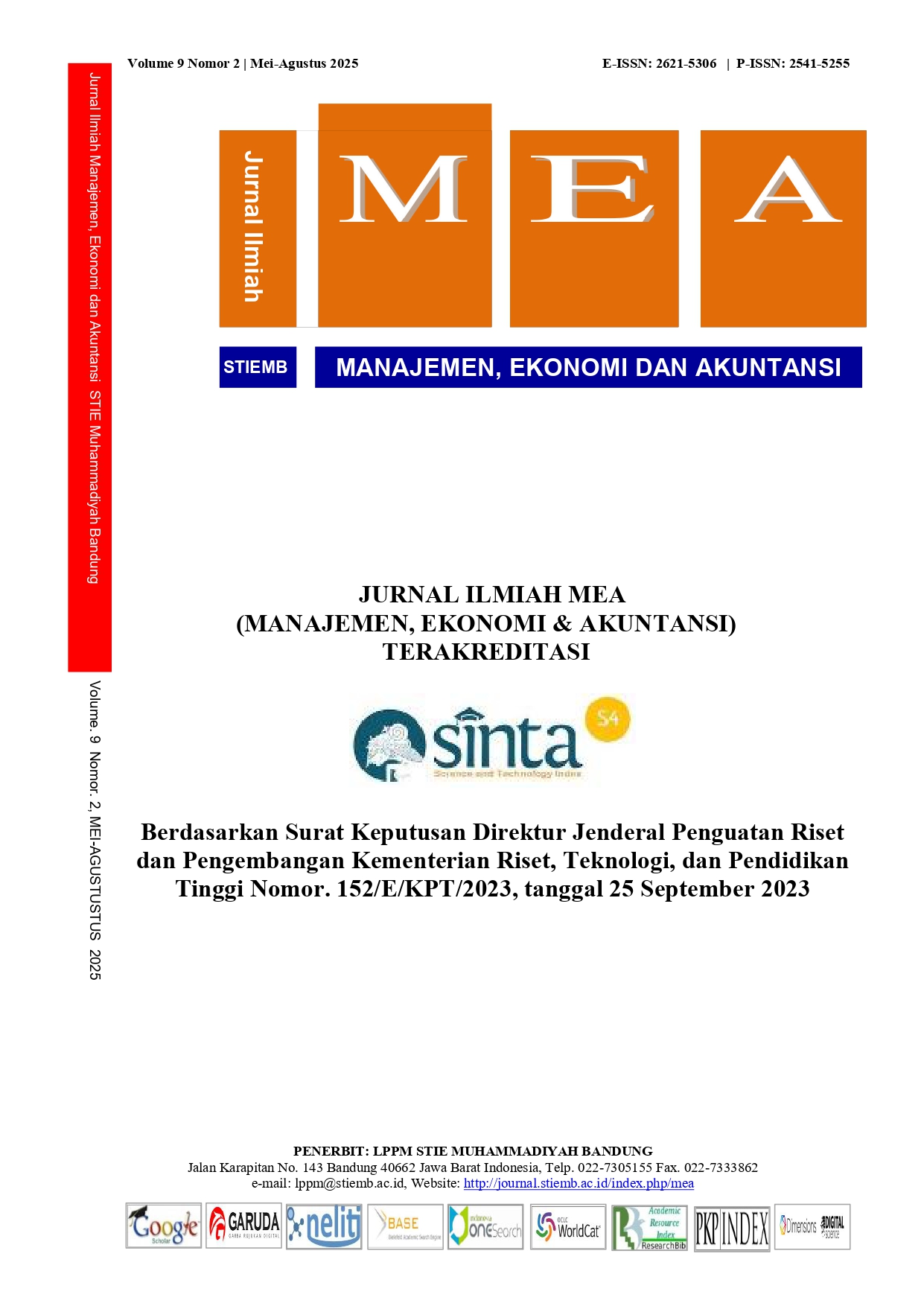IMPORVING PROMOTIONAL MARKETING STRATEGIES FOR OUVAL RESEARCH USING ANALYTICAL HIERARCHY PROCESS (AHP)
Abstract
Following the Covid-19 outbreak, Indonesia's fashion industry, like that of much of the world, has experienced substantial changes. The Covid-19 pandemic's is changing customer behavior in ways that will last for a long time. Many company have been forced to change their sales methods and adopt digital platforms as a result of COVID-19's creation of new customer trends. Following these disruptions, e-commerce became a vital lifeline for Indonesia's apparel sector. Online shopping exploded as physical stores collapsed, and sites like Tokopedia, Bukalapak and Shopee became essential for the delivery of fashion items. E-commerce has changed not only how customers purchase clothing but also how companies interact with their customers.
This research looks at how the well-known Indonesian streetwear company Ouval Research, which was established in 1997, has handled these shifts in the fashion sector. The study uses qualitative research to examine the opportunities and problems brought about by the post-pandemic environment, with particular attention to changes in customer behavior, the function of e-commerce in marketing and the effects of new promotional strategies. Using Analytical Hierarchy Process to finding the best promotional marketing strategies for Ouval Research is the aim of this research, particularly in light of the digital revolution and shifting customer demands. It also offers practical suggestions for the brand to improve its standing in the competitive post-pandemic fashion industry.
References
Barney, J. B., & Hesterley, W. S. (2015). Strategic Management and Competitive Advantage Concepts and Cases: Fifth Edition. Essex: Pearson Education.
Chaudhary, M. U. (2021). Impact of Instagram as a Tool of social Media. 18-29.
Gurel, E., & Tat, M. (2017). SWOT analysis: A theoretical review. The Journal of International Social Research, 994–1006. doi:https://doi.org/10.17719/jisr.2017.1832
Hakim, I. M., Singgih, M. L., & Gunarta, I. (2023). Critical Success Factors for Internet of Things (IoT) Implementation in Automotive Companies, Indonesia. Sustainability, 15(4). doi:https://doi.org/10.3390/su15042909
Hakim, M. I. (2021). Critical Success Factors for Implementation of Internet of Things (IoT) in Automotive Companies: A Literature Review. 11th Annual International Conference on Industrial Engineering and Operations Management, 5199–5204.
Hill, C. W., & Jones, G. R. (2012). Essentials of strategic management (3rd ed.). Mason, OH: South-Western Cengage Learning.
Kementerian Perdagangan Republik Indonesia. (2024, January). GMV pasar e-commerce di indonesia periode 2019-2023. Retrieved from https://satudata.kemendag.go.id/: https://satudata.kemendag.go.id/ringkasan/produk/perdagangan-digital-e-commerce-indonesia-periode-2023
Kim, S. (2022). Critical Success Factors Evaluation by Multi-Criteria Decision-Making: A Strategic Information System Planning and Strategy-As-Practice Perspective. Information, 13(6). doi:https://doi.org/10.3390/info13060270
McKensey & Company. (2020, October 5). How COVID-19 has pushed companies over the technology tipping point—and transformed business forever. Retrieved from www.mckinsey.com: https://www.mckinsey.com/capabilities/strategy-and-corporate-finance/our-insights/how-covid-19-has-pushed-companies-over-the-technology-tipping-point-and-transformed-business-forever
Pangarkar, N., & Prabhudesai, R. (2024). Using Porter’s Five Forces analysis to drive strategy. Global Business and Organizational Excellence, 24–34. doi:https://doi.org/10.1002/joe.22250
Porter, M. E. (2008). The five competitive forces that shape strategy. Harvard Business Review, 86(1), 78–93.
Pourhanifeh, G. H., & Mazdeh, M. M. (2016). Identifying the Critical Success Factors of Organization with Analytic Hierarchy Process Approach (Case Study – Iran Argham Company). Problems and Perspectives in Management, 14(4), 54–60. doi:https://doi.org/10.21511/ppm.14(4).2016.06
Raharjo, T. (2023). A Model of Critical Success Factors for Agile Information Technology Project in Indonesia Using Analytic Hierarchy Process (AHP). ADI Journal on Recent Innovation, 5(1), 68–77. doi:https://doi.org/10.34306/ajri.v5i1Sp.968
Rockart, J. F. (1979). Chief executives define their own data needs. Harvard Business Review, 57(2), 81–93.
Rothaermel, F. T. (2017). Strategic Management. New York: McGraw-Hill Education.
Saaty, T. L., & Vargas, L. G. (2012). Models, Methods, Concepts & Applications of the Analytic Hierarchy Process: Second Edition. New York: Springer Science & Business Media.
Weihrich, H. (1982). The TOWS Matrix—A Tool for Situational Analysis. Long Range Planning, 15(2), 54–66. doi:https://doi.org/10.1016/0024-6301(82)90120-0
Wheelen, T. L., & Hunger, J. (2012). Strategic management and business policy: Toward global sustainability (13th ed.). Upper Saddle River, NJ: Pearson Education, Inc.
Zulkarnaen, W., Amin, N. N. (2018). Pengaruh Strategi Penetapan Harga Terhadap Kepuasan Konsumen. Jurnal Ilmiah MEA (Manajemen, Ekonomi, & Akuntansi), 2(1), 106-128.
Copyright (c) 2025 Jurnal Ilmiah Manajemen, Ekonomi, & Akuntansi (MEA)

This work is licensed under a Creative Commons Attribution-NonCommercial 4.0 International License.





















